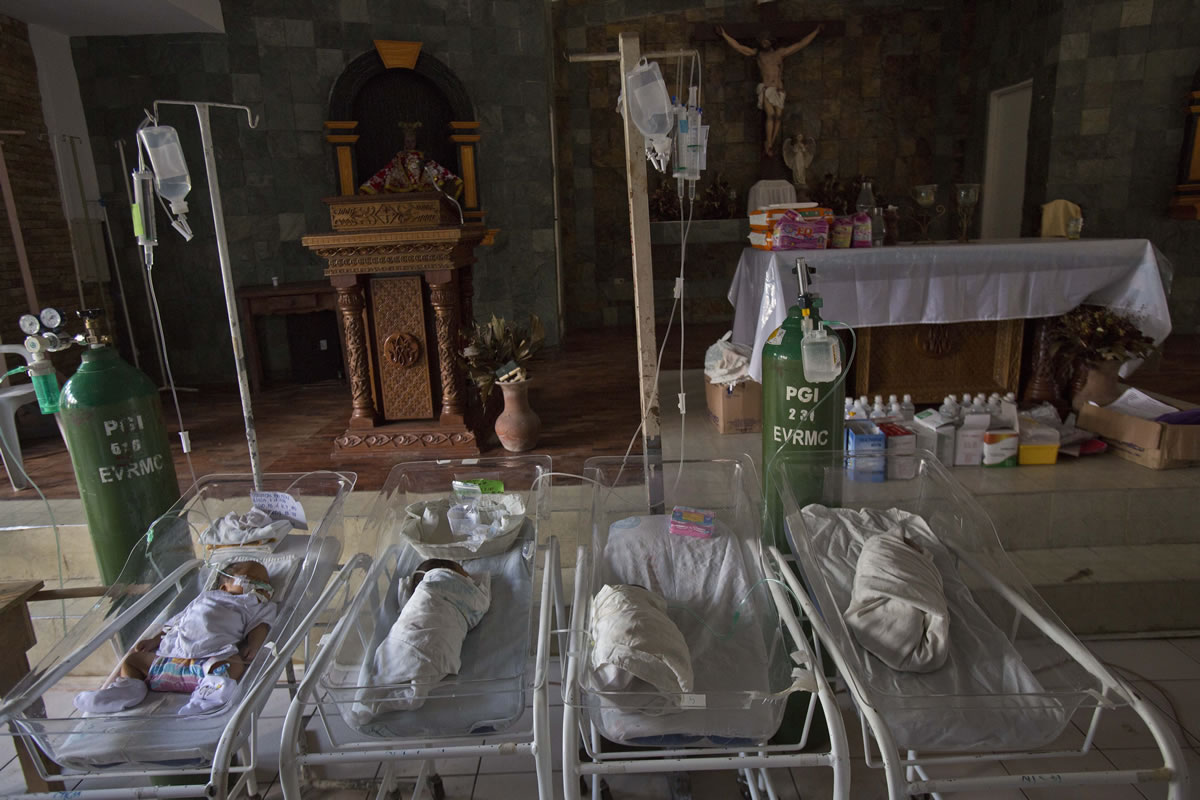Althea Mustacisa dies Saturday night
EDITOR'S NOTE: After the accompanying story was sent to press for The Columbian's Sunday edition, the report below moved on the Associated Press wire.
TACLOBAN, Philippines -- All through her very short life, the parents had squeezed oxygen into her tiny body with a hand-held pump to keep her alive.
In the end, their prayers and whatever little medical care doctors could muster in the typhoon-ravaged hospital were not enough. Althea Mustacia, aged three days, died on Saturday.
She was born on Nov. 13, five days after Typhoon Haiyan annihilated a vast swath of the Philippines, killing thousands. The storm's aftermath is still claiming victims, and Althea was among the latest.
She was born at the government-run Eastern Visayas Regional Medical Center, suffering from a condition called newborn asphyxia, a failure to start regular breathing within a minute of birth. The consequences are possible brain damage or death if not corrected quickly.
According to the World Health Organization, newborn asphyxia is one of the leading causes of newborn deaths in developing countries, accounting for about 20 percent of the infant mortality rate. In the United States, it is the 10th leading cause of infant mortality.
Althea could have been saved had the hospital's ventilators had been working. But power lines were down in the entire region. There was no electricity and none of the equipment in the hospital -- flooded and wrecked -- worked. Not the ventilators, not the incubators, not the suction pumps to feed her oxygen.
Instead, her parents had to push life into her mouth with a hand-held pump connected to an oxygen tank. They took turns to do this continuously since she came into this world without stopping. With her lungs barely functioning, the only sign of life in the infant was a heartbeat.
But Althea's fragile body could not cope. Even the heartbeat stopped on Saturday evening, a few hours after an Associated Press team visited the hospital.
The attending physician, Dr. Leslie Rosario, told the AP that her parents wrapped her body in a small blanket and left in tears.
By TODD PITMAN, Associated Press



